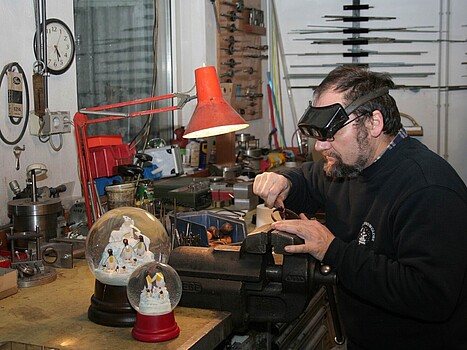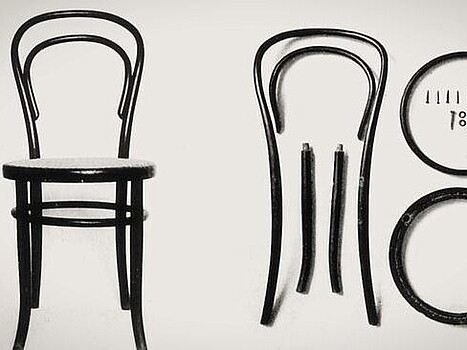12 Viennese Ideas Ahead of Their Time: Historical Innovations
November 18, 2025|TA
Vienna has been the birth place of more innovations and ideas than you can shake a schnitzel at. Here, we look at 12 ideas born during the height of Viennese influence – from the latter half of the 19th century through to the start of World War II – that continue to be felt in today’s world. Some are light-hearted, others life-saving – and all show us something about Vienna in the pre-WWII period.
As the centre of the Austro-Hungarian Empire, which in 1905 encompassed 621,000 square kilometres and over 51 million inhabitants, the brightest minds from all over Europe flocked to the metropolis, creating a melting pot of cultures, languages, ideas, and giving birth to some serious brainpower. Following the Empire’s dissolution at the end of the first World War, Vienna continued to be a cultural and scientific powerhouse – not least thanks to the contributions of its multilingual, cosmopolitan Jewish inhabitants. Tragically, the city was decimated of its Jewish and intellectual population during the horrors of the Nazi era.
Thanks to subsequent decades of reconstruction, education and investment according to social democratic principles, contemporary Vienna – the capital of democratic Austria – again has a population of over 2 million and is known for its quality of life, as a seat of international diplomacy, mecca of music and culture, and a future-facing hotspot for scientists, startups and businesses.
From the blood types to psychoanalysis, Vienna has been the home to many an illustrious invention and scientific discovery, in every field imaginable. What do the humble snow globe and the electric car have in common? The masterminds behind them all called Vienna home.
1. The first internal combustion automobile
The debate around who invented the first car is complex and divisive, but this much is clear: in 1864, Siegfried Marcus made a successful landmark run of a ‘horseless carriage’ on the Mariahilfer Straße in Vienna (today a major shopping street). He was able to do this thanks to his invention of the forerunner to the carburettor, and over the next decades he designed multiple further automobiles, reportedly even completing a journey from Vienna to the nearby town of Klosterneuburg.
2. Hybrid electric car
Whilst we’re on pioneering automotive discoveries, how about this one? In 1899, Ferdinand Porsche joined Jacob Lohner’s Viennese coach-building factory, the k.u.k. Hofwagenfabrik, in developing the ‘System Lohner-Porsche’ electromobile. One year later, upon request by a British client, they unveiled the world’s first hybrid car. It was large and heavy, requiring 1,800 kilograms of batteries and weighing over 4,000 kilograms in total. It could run on both electricity and gas, had four motors and 56 horsepower. It was exhibited at the Paris World Exhibition in 1900, where it stunned visitors.
3. Blood types
What’s your blood type – A+, AB, or perhaps O-? That fact that we know this at all is thanks to Karl Landsteiner, a Viennese scientist who identified the blood groups A, B, and O in humans. He also concluded that blood transfusions between people with the same blood groups didn’t lead to the blood cells destructing, which did happen between people with different blood groups. In 1930, he was awarded the Nobel Peace Prize in Physiology or Medicine and is acknowledged as the father of transfusion medicine. Landsteiner’s later research involved discovering the polio virus, together with Erwin Popper.
4. Waterproof mascara
In the 1930s, Viennese singer Helene Winterstein-Kambersky had enough of the hot stage lights ruining her makeup. Fed up with running make-up and black marks under her eyes, she toiled in her kitchen to perfect a recipe for the world’s first waterproof mascara. It took over 2,000 attempts, but she concocted a formula which was both water-resistant and gentle on the eyes and skin. In 1936 she founded her own cosmetics company, La Bella Nussy, which was a nod to her stage name, Nussy. Her determination and entrepreneurial achievements were made even more impressive by the fact that she had been wheelchair-bound since the 1920s. La Bella Nussy is still a family-run business today, and still produces mascara according to the almost unchanged original recipe.
5. Snow globe
These wildly beloved little souvenirs you find in every tourist shop worldwide were invented in Vienna. Originally, Erwin Perzy was trying to develop an extra bright light source to use as a surgical lamp. During his experimentation, the effect he created in a water-filled flask reminded him of snowfall – thus leading to the invention of the world’s first snowglobe in 1900. The demand for his globes was so great that he opened a shop in Vienna’s 17th District, and it is still in business today, run by the fourth generation of the Perzy family.
6. Hospital hand-washing
Pioneered by Hungarian obstetrician Ignaz Semmelweis during his time at the Vienna General Hospital in the mid-19th century, this concept – which today seems self-evident – actually saw him shunned from the world of medicine. It had been common practice for doctors to come out of one surgery and head straight into the birthing room, resulting in widespread infection. But the evidence was clear: Semmelweis implemented a policy of washing hands with chlorinated lime at his two maternity clinics, and post-birth mortality rates plummeted to almost zero within months.
7. Indoor ski slopes
The first real attempt to simulate the thrill of skiing indoors was in an abandoned railway station hall at Vienna’s Nordwestbahnhof, where chemist L.C. Ayscough‘s newly invented artificial snow was transformed into a permanent winter wonderland. Norwegian ski jumper, Dagfinn Carlsen, opened the ‘Schneepalast’ in 1927, and it was a sensation – it featured a massive ski slope, toboggan run, and ski jumping hill 21 metres high. Nowadays, Austria boasts plenty of natural Alpine ski and snowboarding regions, but indoor skiing continues to be a huge hit around the world, from the United States to UAE to China.
8. The eight-octave concert grand piano
It just makes sense that Vienna, the home of classical music, should be a pioneer in world-class instruments. In 1909, Bösendorfer built the first ever piano with a full eight-octave range, and for 90 years, it was the only concert grand piano in the world with 97 keys. The Bösendorfer Model 290 Imperial has been nicknamed the ‘Rolls-Royce of pianos’.
9. The fitted kitchen
Like most people nowadays, you most likely have a fitted kitchen. But did you know that this concept is a relatively modern one, born here in Vienna? ‘The Frankfurt Kitchen’ was developed by Margarete Schütte-Lihotzky in 1926 to reduce the burden of labour for women at home. Schütte-Lihotzky was influenced by the fight for women’s economic and personal independence and saw design as a solution to social issues – rethinking housework was a necessary factor in this struggle.
Her kitchens were designed to maximise efficiency, and centred on modern theories of efficiency, hygiene and workflow, with short distances and reaches. They were equipped with up-to-date appliances, practical furnishings, and plenty of storage.
10. First mass produced item of furniture
Thonet is where perhaps the best of Vienna meet: coffee-house culture and innovative, startup spirit.
In 1859, Michael Thonet debuted his now-iconic chair no. 14: the Vienna Coffee House Chair, dubbed ‘the chair of chairs’. The new construction technique of bending solid beech wood gave birth to a product which was available almost worldwide, long before globalisation. Based on a modular principle, it resulted in a demand-oriented, economically efficient production and was delivered to customers flat-packed. The chair was stronger and made more simply, meaning it could be considered the first product of modern industrial design.
11. Psychoanalysis
Everyone is familiar with the father of modern psychology and one of Vienna’s most famous figures: Sigmund Freud. Freud truly revolutionised understanding about mental health and treatment of related conditions. His method of listening to patients to deeper understand their minds is now known as psychoanalysis, which still influences psychology and psychiatry today. How we think about dreams, childhood, personality, memory, sexuality and therapy is thanks to his work.
Today, you can visit the office where he practiced neuropsychology for almost half a century and produced most of his writings: Berggasse 19 is a museum and open to the public.
12. Quantum mechanics
Viennese-born Wolfgang Pauli and Lise Meitner are known as among the greatest minds in quantum physics (as well as pen pals) – though their Jewish ancestry meant that they were also driven from Vienna when Austria was incorporated into Nazi Germany, a development that had tragic consequences for humanity as well as for science.
Wolfgang Pauli pioneered several essential concepts in quantum mechanics. He formulated the exclusion principle – also known as the Pauli principle – and the theory of nonrelativistic spin. The Pauli principle says that no two identical fermions can be in the same quantum state at the same time, and the theory of nonrelativistic spin explains the basic idea of particles’ intrinsic spin without using relativity. For this work, he received the Nobel Prize in Physics in 1945, which had first been formulated in the 1920s. Einstein called Pauli his ‘spiritual heir’ and greatly admired his work.
In 1906, Lise Meitner was only the second woman to ever receive a doctoral degree in physics from the University of Vienna. Later, at the Friedrich Wilhelm University in Berlin, she began conducting research into radioactive materials with chemist Otto Hahn. Despite rampant sexism in academia, Meitner – often together with Hahn – made numerous contributions to the study of physics. She and Otto Hahn, working with others, demonstrated the possibility of nuclear fission just as World War II was beginning. Meitner was forced to flee to Sweden, which remained her home for decades. Despite her contributions, only Otto Hahn was awarded the Nobel prize for discovering nuclear fission. Indeed, Meitner was nominated 49 times, but never won.




